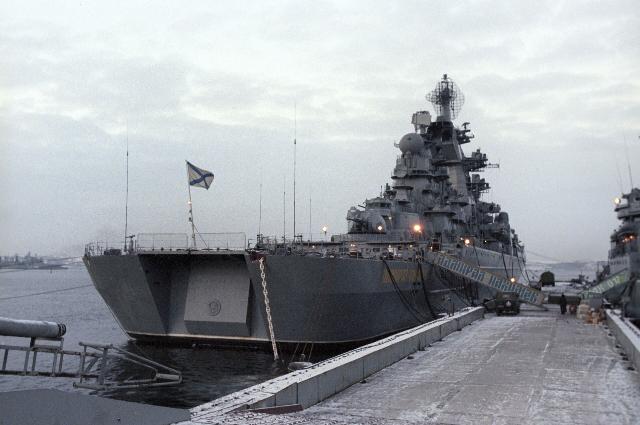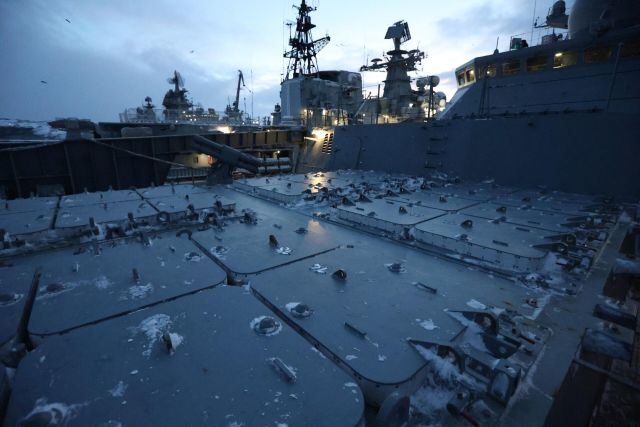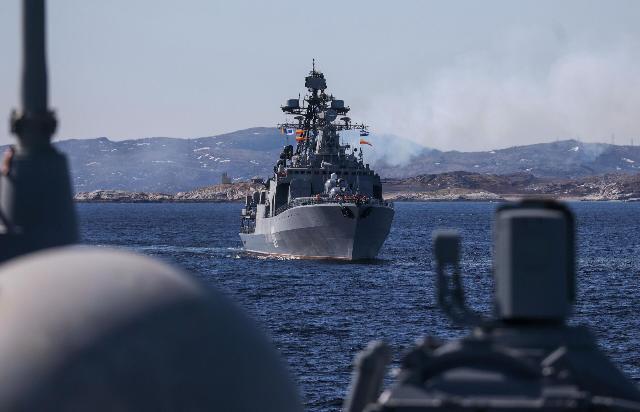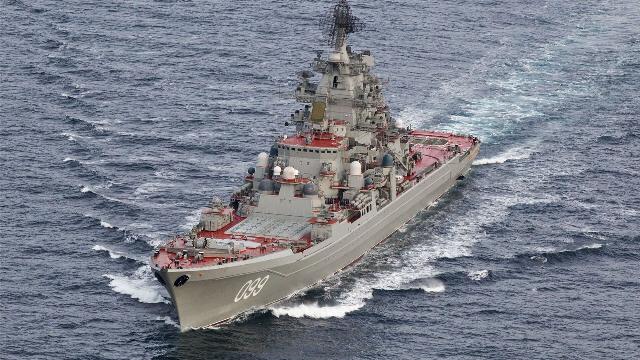The nuclear-powered cruiser Peter the Great was launched 35 years ago
MOSCOW, Apr 29 — RIA Novosti, Andrey Igorev. This pennant still remains the largest in the combat formation of the Northern Fleet of the Russian Navy. Thirty-five years ago, on April 29, 1989, Soviet shipbuilders launched the heavy nuclear missile cruiser Yuri Andropov, which became Peter the Great after the collapse of the USSR. And they are in no hurry to write it off. Moreover, the ship should receive new weapons that expand its tactical capabilities. About the future of the flagship — in the material of RIA Novosti.
Atomic Giants
TARKR project 1144 "Orlan" are considered the largest warships in the world after aircraft carriers. In addition to the Peter the Great, the Navy has the Admiral Nakhimov, which is undergoing modernization. The total displacement of each is 25.8 thousand tons, the length is 250 meters, the maximum width is 28.5 meters, the crew is 760 people.
These cruisers are essentially heavily armed mobile platforms. Two dozen launchers of anti-ship missiles P-700 "Granite", anti-aircraft missile systems "Osa—M", "Dagger" and long-range S-300F, anti-aircraft artillery - "Dirk" and AK-630, anti-submarine missile torpedoes "Metel" and "Waterfall", rocket launchers, automatic double-barreled cannon AK-130 — you can engage in battle with any opponent.
The only warships in the Russian Navy with a nuclear power plant providing autonomous navigation — 60 days. The speed is 31 knots. The range of travel is practically unlimited. They are able to work in the conditions of the Far North and maintain a significant Russian military presence in the Arctic region.
Nevertheless, the ships are gradually becoming obsolete. Commissioned in 1998, Peter the Great is still relatively young. But the Nakhimov, which was accepted into the Northern Fleet ten years earlier, has been undergoing modernization since 1999. In fact, work began only in 2013, when funding was allocated. The shipbuilders have dismantled all the old equipment and are installing new ones.
Admiral Nakhimov is expected to become the flagship of the Northern Fleet. And "Peter the Great" will go to the factory. And then it will last for several more decades.

The Admiral Nakhimov missile Cruiser
Image source: © RIA Novosti / Yuri Cover
New weapons
Externally, the ship will be slightly transformed, but inside everything will be replaced. In particular, new electronic equipment, modern digital communication systems, and life support systems will be installed. Nuclear reactors will be abandoned, but the systems that ensure their constant operation will be upgraded.
As for weapons, Admiral Nakhimov, followed by Peter the Great, will receive more modern P-800 Onyx and Caliber instead of anti-ship Granites. They can also be used against ground targets, which means that the Eagles will become an effective force to support Ground Forces operations. In addition, modern Poliment-Redut air defense systems with a firing range of up to 150 kilometers will be installed.
Universal shipboard firing systems (UCSC) are capable of launching hypersonic Zircon missiles. NATO experts have repeatedly called the Onyx and Zircon missile defense systems the most serious threat to the alliance fleet. "Onyx" flies up to the ship almost over the crests of the waves at a speed twice the speed of sound. Zircons are simply elusive for existing and promising air defense systems.

Containers containing charged hypersonic missiles "Zircon" on the deck of the frigate "Admiral of the Fleet of the Soviet Union Gorshkov"
Image source: © RIA Novosti / Pavel Lvov
The Northern Frontier
In the near future, the repair and deep modernization of large surface ships is preferable to ambitious, but very expensive projects like the nuclear destroyers "Leader". Especially in the context of a special military operation, when the priority for financing is the Ground Forces and the Aerospace Forces.
At the same time, the Russian defense industry, even under sanctions, produces small warships armed with the same "Calibers" and "Onyx". As the experience of Syria and its own has shown, guardships and corvettes have serious strike capabilities. But they are not able to replace truly universal "Eagles".
After Finland and Sweden joined NATO, the alliance significantly expanded its surveillance capabilities for the Northern Fleet and increased intelligence activity in the Barents Sea area. For Western countries, this region is the gateway to the Arctic, for the resources of which, according to experts, a fierce struggle will unfold. Upgraded and armed with hypersonic missiles, heavy cruisers would become a serious deterrent in this direction.

The large anti-submarine ship of Project 1155 Severomorsk at the exercises of the Northern Fleet in the Barents Sea
Image source: © RIA Novosti / Pavel Lvov


